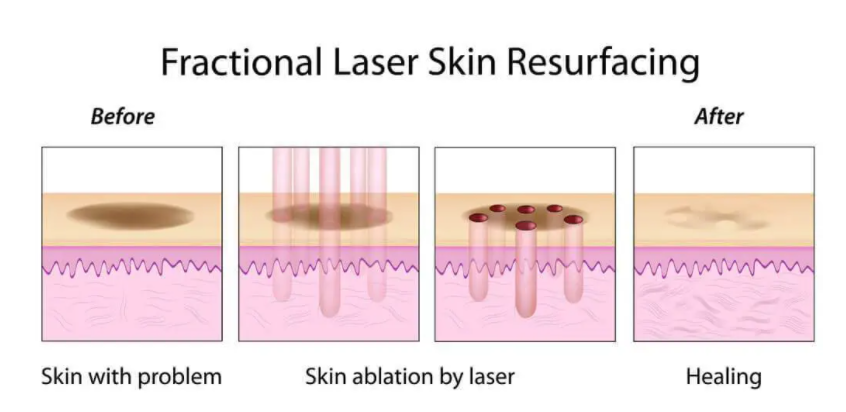Fraxel Laser: Fraxel lasers are CO2 lasers that deliver more heat to skin tissue. This results in greater collagen stimulation for a more dramatic improvement. Pixel Laser: Pixel lasers are Erbium lasers, which penetrate skin tissue less deeply than a Fraxel laser.
Fraxel Laser
Fraxel lasers are CO2 lasers and deliver more heat to skin tissue, according to the Colorado Center for Photomedicine. This results in greater collagen stimulation, making Fraxel lasers a better choice for patients seeking a more dramatic improvement.
Pixel Laser
Pixel lasers are Erbium lasers, which penetrate skin tissue less deeply than a Fraxel laser. Pixel laser therapy also requires multiple treatments for optimal results.
Uses
Both the Fraxel and Pixel lasers are used to treat aged or damaged skin.
Results
Results vary depending on the intensity of treatment and the type of laser used. A single Fraxel repair treatment will deliver more dramatic results than multiple Pixel treatments. However, several Pixel treatments would be more appropriate for acne scars than a similar number of treatments with the gentler Fraxel re:fine laser, which is more suitable for minor skin damage.
Recovery Time
Depending on the intensity of treatment, recovery time can take anywhere from a single day to up to 10 days following a Fraxel laser treatment. Pixel laser recovery time takes between three and seven days.
What is Pixel Fractional Laser Skin Resurfacing?
Pixel is a revolutionary non-invasive fractional laser treatment that can transform the appearance of your skin, combatting many signs of aging as well as other cosmetic imperfections that could be affecting your confidence and self-esteem.
How does Pixel fractional laser skin resurfacing work?
Pixel works by creating thousands of microscopic perforations within the treatment zone, removing the epidermis and upper dermis. This carefully controlled damage then triggers the body’s natural healing process. Since Pixel® has a longer wavelength than many other skin resurfacing lasers which allows it to penetrate more deeply into the skin. The benefit of this is that the laser can then be used to stimulate the production of collagen and elastin – and it is these ingredients that will support the creation of healthy, strong, smooth and flaw-free skin.
Recovering after Pixel laser skin resurfacing
Immediately after your treatment your skin is expected to be slightly sore and red, with mild swelling. Your skin may have a slight rough texture and you may want to take over the counter painkillers to help manage any discomfort. Nevertheless, recovery following Pixel is typically much faster than other skin laser resurfacing treatments. You can expect to be able to return to most activities around 7-10 day following your procedure. New skin will start to form immediately, you will start to notice a difference in the texture and appearance of your skin in as little as 3 to 5 days following your treatment. Depending on the problem that was addressed, healing should be complete between 10 and 21 days after your Pixel appointment, although your skin may remain a little redder than normal, gradually fading over a few weeks or months.
Pixel has a range of proven cosmetic benefits. These include, but are not limited to:
Reduction or elimination of fine lines and wrinkles
Improvement in the appearance of scarring, including historic acne scarring, surgical and traumatic scars
Improved skin tone
Smoother skin texture
Reduction in pore size which creates better skin texture and a smoother base for cosmetics
Elimination of abnormal areas of pigmentation such as brown spots
Post time: Sep-21-2022

